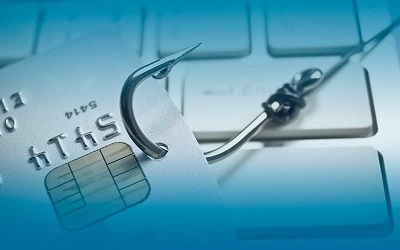
With the development of Internet technologies and the expansion of the Internet, there is more likelihood that a regular user will deal with frauds and scams. In recent times, phishing has become popular. It is, in fact, a kind of fraudulent activity the purpose of which is to gain access to confidential information of users (logins, passwords) and use it with bad intentions.
How does phishing work in more details? Read below to find out more about this phenomenon and how to protect yourself from it.
Phishing is a scheme according to which hackers force users to pass their confidential information, such as passwords and social security numbers. It usually involves sending spam messages that appear to originate from a trusted source, such as a bank or serious company (for example, PayPal phishing – using such a source is called a bite). The spam message contains a link to a fraudulent website (a trap). The users, not suspecting anything, enter information that hackers are interested in, believing that they are on a trusted site.
Understanding the nature of these attacks and how they work can help detect phishing attacks as well as get some information about how to act if your website has a phishing trap.
Phishing messages are designed for immediate action without leaving any time for reflection. Fraudulent messages often come from the name of well-known brands and affect the emotional perception of information. They can:
Using various psychological tricks, phishing scams encourage users to enter their confidential data on a fake web page (phishing page) that is apparently not distinguishable from the original site, taken by scammers as a basis for copying.
The fundamental element of phishing or phishing attacks is the process of creating a duplicate copy or clone of a well-known website to steal a user's password or other protected information. This method has gained great popularity since most users do not always comply with basic computer security requirements.
In most cases, the only difference between a fake page and the real one is its wrong URL. Often users do not pay attention to the page address bar. And since the appearance of the phishing page completely copies the page of the original site, most users fall for the trick and share confidential information with scammers. It is quite difficult for ordinary users to identify a phishing scam page due to its highly detailed appearance.
How does phishing work? Hackers or phishing scammers target a wide range of users. They produce a mass distribution of phishing emails and messages with a very high degree of similarity with the original. Letters may contain the official logos of the institution, site, company or brand on whose behalf the appeal is made. For various reasons, the user is prompted to click on the attached phishing link and enter their personal data. The reasons may be different: all sorts of contests and quizzes, winning sweepstakes, incredibly high discounts, and sales, confirmation of your billing details or PIN codes, requirements to change your login details under the pretext of protection against hacking, etc.
As a result of such actions, the users get on the phishing page, which is almost indistinguishable from the original, and enter their confidential information.
To get information about clients of banks or electronic payment systems, fraudsters use not only the distribution of emails, but also online ads, search engine results, simulations of pop-up windows with system messages, and the dissemination of information on social networks. According to experts, 70% of phishing attacks in social networks are a success. This is due to the fact that most Internet users do not pay enough attention to cybersecurity.
Examples of Online Phishing Schemes:
How to recognize phishing. An email that begins with the words, “Congratulations! You won ... " is a true mark of a fraud. You are informed about winning a lottery or a giveaway, and to receive a prize, you only need to log in, leaving personal account data on someone else’s resource. Strangely enough, such a primitive strategy of deception still works since the hope for the best and the desire to receive a gift lie in human nature.
You should remember that phishing sites may be hidden behind pop-up windows. They can lead to targeted advertising. There are situations when the user already sees their e-mail address in the “login” column, and they are only asked to enter their password in the lower column.
What moments indicate that this is a phishing attack and how to protect yourself:
How to Avoid Phishing?
If you suspect that you have been the victim of Internet fraud:
Carefulness and caution on the Internet will protect you from unnecessary worries and will not allow you to become a victim of fraudsters.